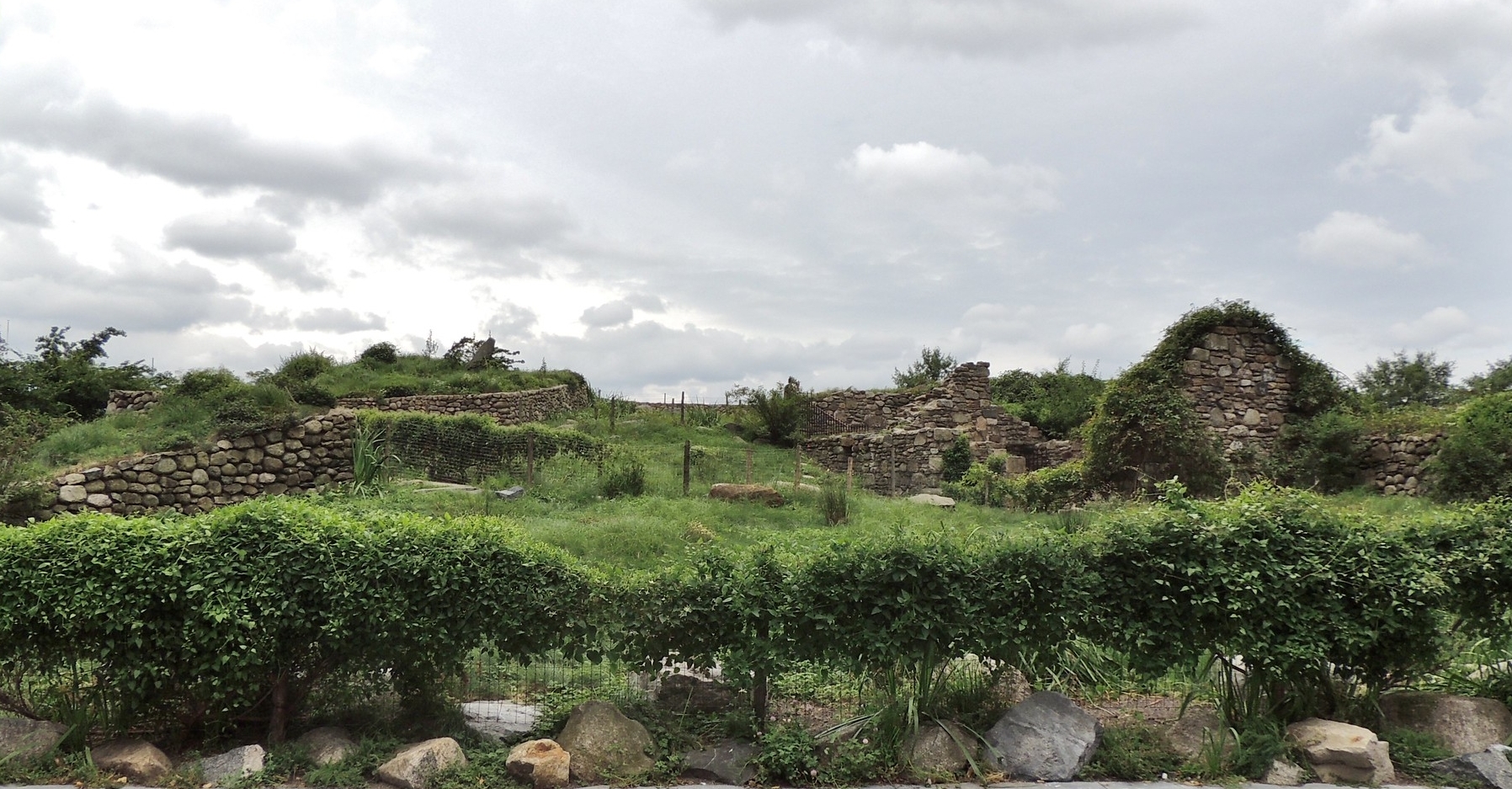When you look at the photo below, it would be easy to imagine yourself transported to the wilds of Connemara in the west of Ireland. So it's pretty amazing that it was actually taken at the posted coordinates in lower Manhattan, looking west at the Irish Hunger Memorial - a really unique urban attraction that is the focus of this Virtual Rewards 2.0 Geocache.

The Irish Potato Famine, also known as the Great Hunger ("An Gorta Mór" in Gaelic), began in 1845 when the Phytophthora Infestans organism, which originated in South America, arrived by boat and spread rapidly throughout Ireland. The infestation ruined up to one-half of the potato crop that year, and about three-quarters of the crop over the next seven years. So why was the humble potato so important to the Irish tenant farmer? Ruled from England for hundreds of years, most of the land in Ireland was owned as large estates by absentee English landlords, who made long-term leases to English middlemen. They, in turn, subdivided the estates into small parcels and rented them at high rates to Irish tenants, often to the same people whose families had historically owned the land. Although the Irish peasants were poor, they could pay the high rent in the form of produce, grains, livestock and sometimes pigs, which were exported by the landlords back to Great Britain. Thus the main problem for tenants was to have an alternate food crop to sustain the family. The potato provided the perfect solution. It gave a good yield, stored well long term and with a typical adult consumption of 8 to 14 lbs daily, satisfied their hunger. This was virtually all the peasants had to eat during the winter months. The average family consumed up to a ton of potatoes per month. So the infestation had a catastrophic impact on Ireland and its population. Before it ended and potato crops recovered in 1852, the Famine resulted in the death of roughly one million Irish from starvation and related causes, with at least another million forced to leave their homeland as refugees. The population of the island fell from 8 million in 1841 to 4.4 million in 1861. Ironically the aforementioned exports from Ireland to Great Britain of livestock, butter, and other commodities not only continued but increased in volume during this period.
The Irish Hunger Memorial is designed to raise public awareness of the events that led to the famine of 1845-52 and to encourage efforts to address current and future hunger worldwide. Designed by artist Brian Tolle, it contains stones from each of Ireland's 32 counties, and is elevated on a limestone plinth. Along the base are bands of texts separated by layers of imported Kilkenny limestone. The text, which combines the history of the Great Famine with contemporary reports on world hunger, is cast as shadow onto illuminated frosted glass panels. Central to the project is an authentic Famine-era cottage donated to the Memorial by Tolle's extended family, the Slacks of Attymass, County Mayo, Ireland. The cottage has been painstakingly reconstructed on the Memorial's half-acre site as an expression of solidarity to those who left from those who stayed behind. From the cottage, visitors to the Memorial meander along paths winding through a rugged landscape thickly planted with native Irish flora-plants often found growing in fallow fields, ending at an overlook with a view of Jersey City across the Hudson River. The Memorial, which opened in 2002, was recently renovated to mitigate sub-par initial construction exacerbated by Hurricane Sandy water damage at a cost of $5.3m, reopening in August 2017.
Logging Requirements - Perform Tasks 1 and 2 below:
Task 1: from the posted coordinates at the back of the memorial, take your own version of the photo above BUT include EITHER yourself (which does not have to include your face) OR your geocaching device OR your favorite trackable OR your keys in the photo and post with your "found it" log.
Task 2: when you post your online log, email or message your answer using the CO's profile links to EITHER of the following 2 questions:
Question 1 (if the Memorial is open): what 2 counties are named on the large stones that you can sit on at the overlook?
Question 2 (if the Memorial is closed): From the 3rd lowest text band to the right of the entrance, who said "What greater human right is there than the right to eat"?
No armchair logs or spoilers. Failure to complete both logging tasks in a timely fashion may lead to deletion of your "found it" log. Memorial is open daily with no admission fee.
Virtual Rewards 2.0 - 2019/2020
This Virtual Cache is part of a limited release of Virtuals created between June 4, 2019 and June 4, 2020. Only 4,000 cache owners were given the opportunity to hide a Virtual Cache. Learn more about Virtual Rewards 2.0 on the Geocaching Blog.